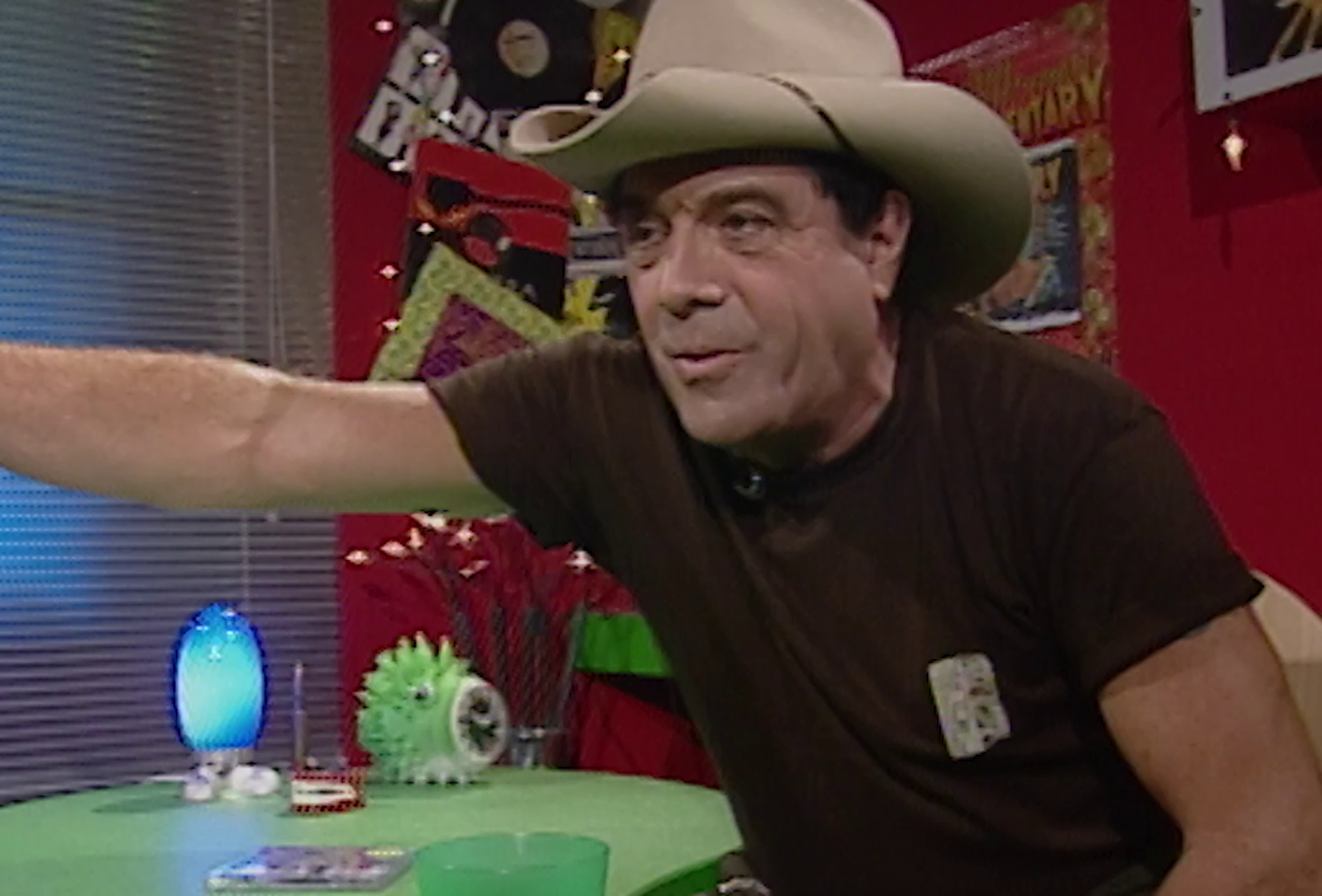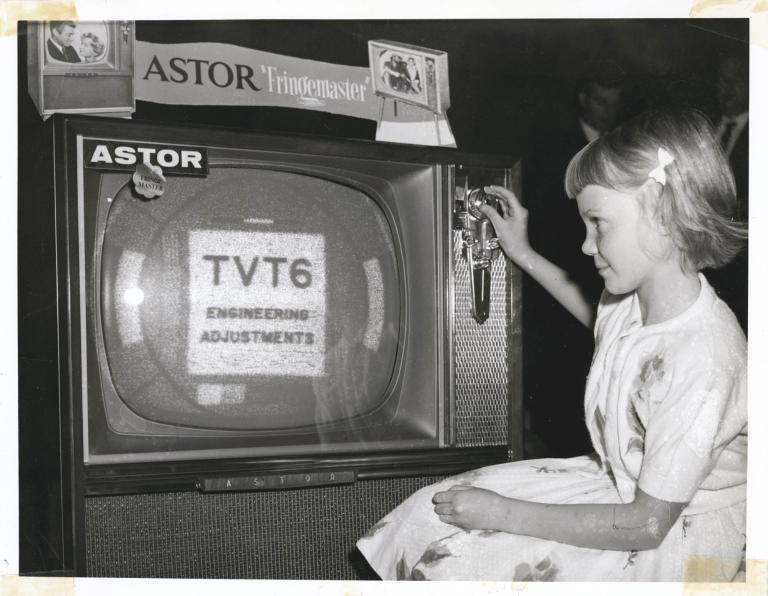
A child watches the TVT6 test broadcast in Launceston
In 1960, a child watches the TVT6 test broadcast on a Fringemaster TV set in Lauceston, Tasmania. This photo captures the newness of television as a concept at the time, having arrived in Australian in 1956, just in time for the 1956 Melbourne Olympics. But, as this image shows, the world of television was still in black-and-white and a television channel could only be changed by turning the knob on the front of the set – a strange concept for anyone who's only grown up using remotes!
In the 1960s, children like this girl would have enjoyed popular American comedies like I Love Lucy and Leave it to Beaver and the after-school fave The Samurai – the adventures of Japanese sword fighter Akikusa Shintarō. Australian shows that became long-running classics included detective series Homicide, the pop music show Bandstand and Graham Kennedy’s In Melbourne Tonight. The homegrown soapie Bellbird aired for 10 years from 1967, spanning the black-and-white and colour divide. ‘C-day’ was on 1 March 1975 and marked the date Australian television was thrown into a world of glorious colour.
The National Film and Sound Archive of Australia acknowledges Australia’s Aboriginal and Torres Strait Islander peoples as the Traditional Custodians of the land on which we work and live and gives respect to their Elders both past and present.



